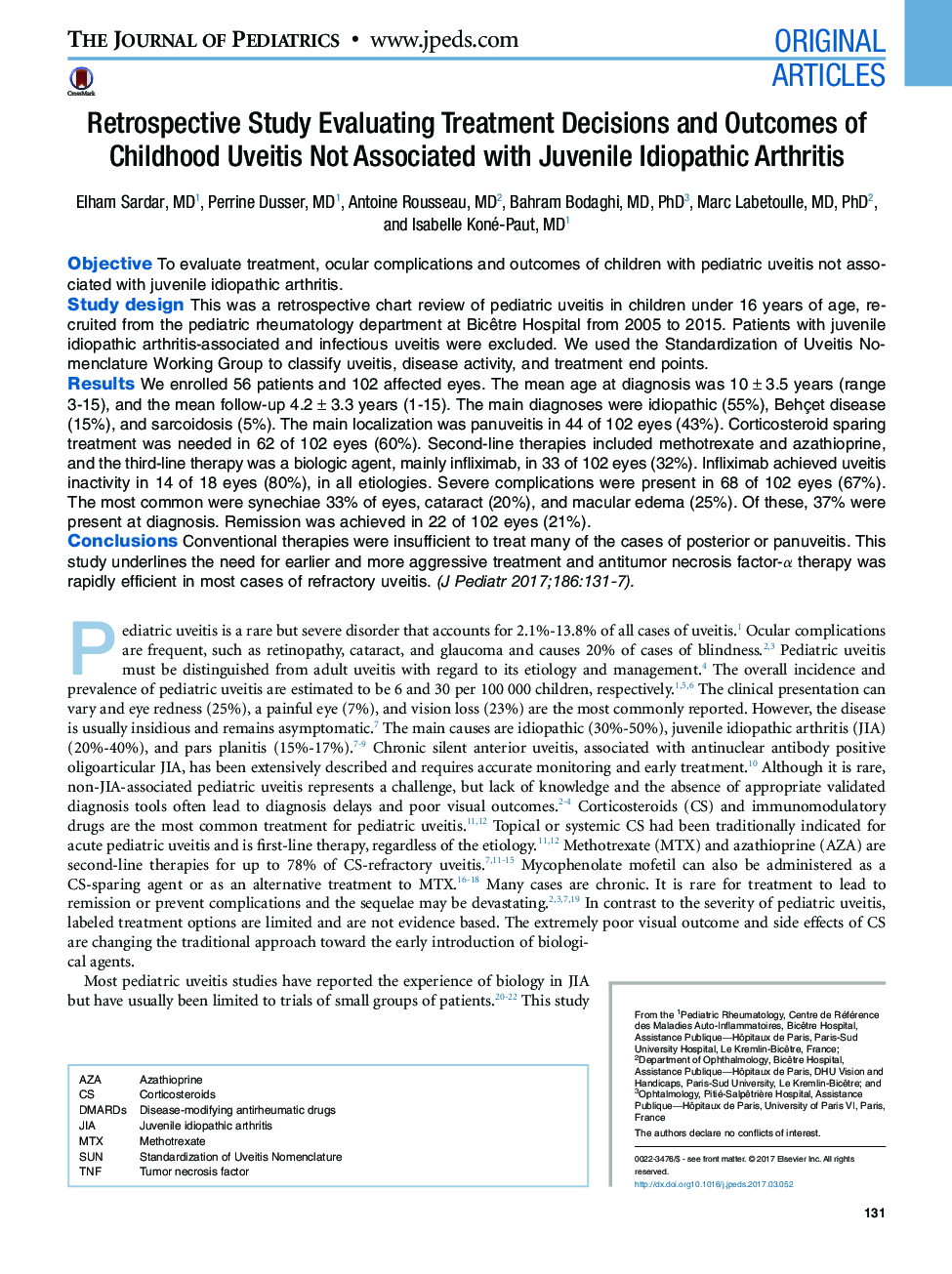| Article ID | Journal | Published Year | Pages | File Type |
|---|---|---|---|---|
| 5719452 | The Journal of Pediatrics | 2017 | 8 Pages |
ObjectiveTo evaluate treatment, ocular complications and outcomes of children with pediatric uveitis not associated with juvenile idiopathic arthritis.Study designThis was a retrospective chart review of pediatric uveitis in children under 16 years of age, recruited from the pediatric rheumatology department at Bicêtre Hospital from 2005 to 2015. Patients with juvenile idiopathic arthritis-associated and infectious uveitis were excluded. We used the Standardization of Uveitis Nomenclature Working Group to classify uveitis, disease activity, and treatment end points.ResultsWe enrolled 56 patients and 102 affected eyes. The mean age at diagnosis was 10â±â3.5 years (range 3-15), and the mean follow-up 4.2â±â3.3 years (1-15). The main diagnoses were idiopathic (55%), Behçet disease (15%), and sarcoidosis (5%). The main localization was panuveitis in 44 of 102 eyes (43%). Corticosteroid sparing treatment was needed in 62 of 102 eyes (60%). Second-line therapies included methotrexate and azathioprine, and the third-line therapy was a biologic agent, mainly infliximab, in 33 of 102 eyes (32%). Infliximab achieved uveitis inactivity in 14 of 18 eyes (80%), in all etiologies. Severe complications were present in 68 of 102 eyes (67%). The most common were synechiae 33% of eyes, cataract (20%), and macular edema (25%). Of these, 37% were present at diagnosis. Remission was achieved in 22 of 102 eyes (21%).ConclusionsConventional therapies were insufficient to treat many of the cases of posterior or panuveitis. This study underlines the need for earlier and more aggressive treatment and antitumor necrosis factor-α therapy was rapidly efficient in most cases of refractory uveitis.
